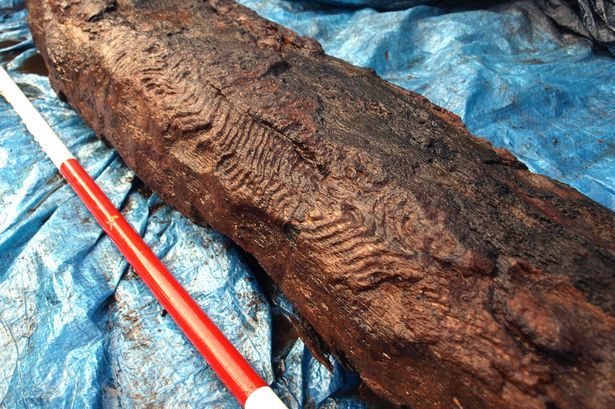During construction on the Maerdy Wind Farm in Rhondda Valley, Wales, workmen have unearthed a series of decorative wood carvings. The carvings are believed by experts to be Europe’s oldest wooden carvings, dating back more than 6,000 years.
An archaeologist from Heritage Recording Services Wales named Richard Scott Jones examined the artifacts and said that they were “priceless.” He added that the wooden pieces would be unveiled to the public once they were sent to the National History Museum in St. Fagans.
According to Jones, the wood is likely to date back 6,270 years to the Late Mesolithic or Early Neolithic period. “In archaeological circles,” he said, “this is the equivalent to winning the lottery.”
Apparently, Wales is an unlikely place to find this type of artifact, but it will aid researchers to understand the people and culture of the time. “Finding a piece of decorative art like this is incredibly rare in this area of Wales, especially on uplands.” Jones said, “And in terms of timber, this is truly unique. It gives us an idea of the sophistication in terms of artwork around at that time.”

The artifacts total twelve in number and were buried in waterlogged peat deposits. The workmen who discovered them had been working on the construction of a substation for the Maerdy Wind Farm.
Upon discovery, one of the pieces was removed off-site and cleaned for inspection. It had been elaborately carved by human hands. The piece, measuring around 1.7 meters long, has an intricate pattern down one side and an oval motif on one end. Experts believe that this timber could have been a tribal marker post and used to indicate tribal boundaries, hunting grounds, or a sacred site.
As soon as the significance of the timber was established, the pieces were sent to Newport Ship Center. There they were placed in a water holding tank in order to help with preservation and were later scanned using a 3D laser.
So far, experts from the University of Wales Trinity St. David and the Glamorgan-Gwent Archeological Trust have examined the find, as well as quite a few paleo-entomologists.
Following the discovery, further excavation was carried out on Maerdy Wind Farm in hopes of discovering other artifacts from the same tribe, but, unfortunately, none were found.
Alan Baker, from 2020 Renewables, commented, “This is a tremendous discovery of real historical significance.” He explained that they had reached an agreement with the local council regarding the site and that they were willing to front the costs. “We had a normal written scheme of archaeological investigation with Rhondda Cynon Taf council as part of the planning conditions for the wind farm. This meant putting protective fencing around a number of sites of cultural heritage before starting ground work and while stripping topsoil.” He continued, “Also, as part of that agreement we were responsible for the costs associated with the investigation and assessment of the find. It’s very exciting that this discovery has proved to be of such international significance and fully justifies our company policy of protecting sites of historic interest.”
Before the wood can be viewed by the public, it must be preserved. In 2014, the artifacts underwent such preservation via a conservation program that included a wax-glycol treatment—this treatment will prevent the wood from rotting in the open air—at the York Archeological Trust, located in York.
It is the hope that once this conservation work is completed the artifacts will be stable enough to transport to Cardiff. There, they will be on display for all to see at the National History Museum.